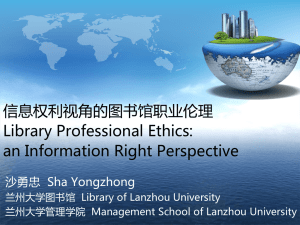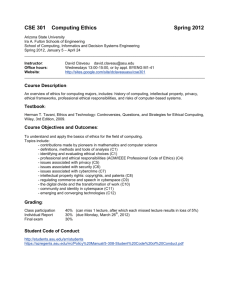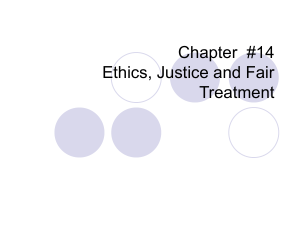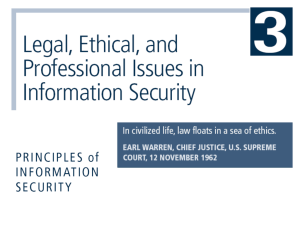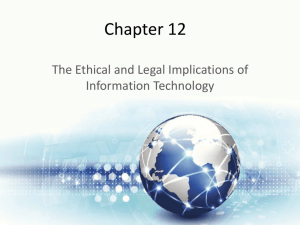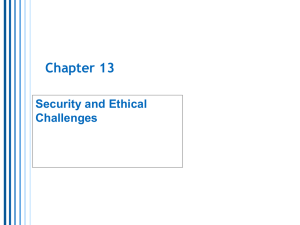Title Unknown
advertisement
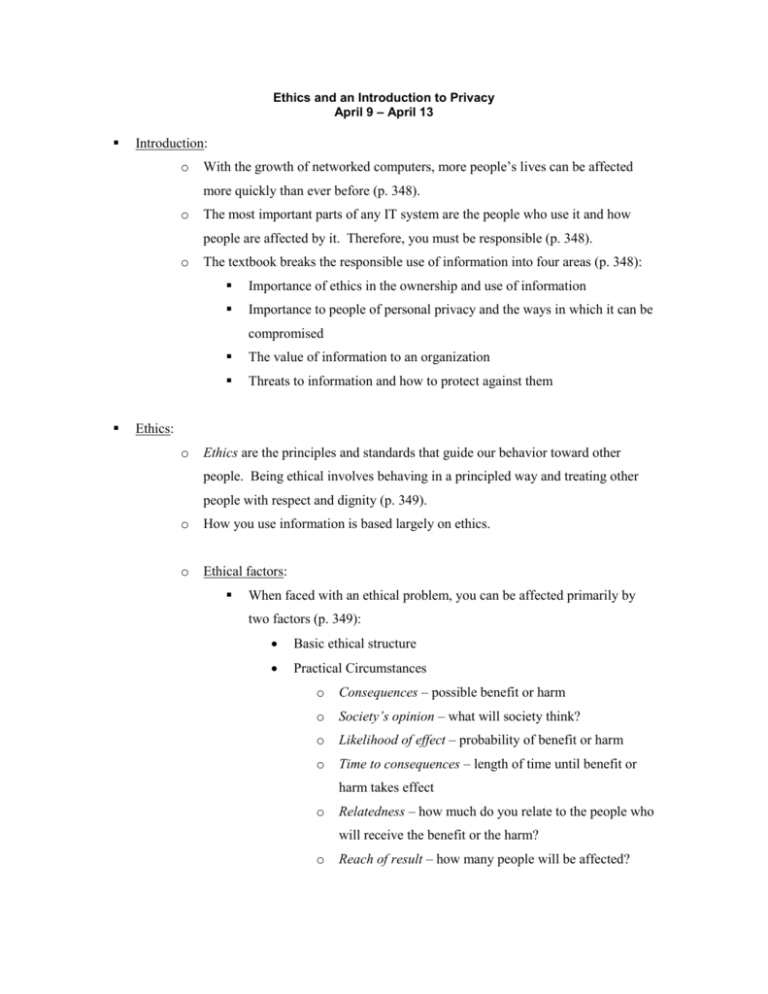
Ethics and an Introduction to Privacy April 9 – April 13 Introduction: o With the growth of networked computers, more people’s lives can be affected more quickly than ever before (p. 348). o The most important parts of any IT system are the people who use it and how people are affected by it. Therefore, you must be responsible (p. 348). o The textbook breaks the responsible use of information into four areas (p. 348): Importance of ethics in the ownership and use of information Importance to people of personal privacy and the ways in which it can be compromised The value of information to an organization Threats to information and how to protect against them Ethics: o Ethics are the principles and standards that guide our behavior toward other people. Being ethical involves behaving in a principled way and treating other people with respect and dignity (p. 349). o How you use information is based largely on ethics. o Ethical factors: When faced with an ethical problem, you can be affected primarily by two factors (p. 349): Basic ethical structure Practical Circumstances o Consequences – possible benefit or harm o Society’s opinion – what will society think? o Likelihood of effect – probability of benefit or harm o Time to consequences – length of time until benefit or harm takes effect o Relatedness – how much do you relate to the people who will receive the benefit or the harm? o Reach of result – how many people will be affected? o Legal vs. Ethical: Legal and ethical, illegal and ethical, legal and unethical, illegal and unethical o Intellectual Property: Intellectual property is intangible creative work that is embodied in physical form. Examples include music, novels, paintings and sculptures from the world of art and blueprints, sketches, schematics, documents, software, etc. from the world of business (p. 351). Copyright is the legal protection afforded an expression of an idea (a.k.a. intellectual property). Having a copyright means that no one can use your intellectual property without your permission (p. 351). There are exceptions to U.S. Copyright law. The Fair Use Doctrine allows for copyrighted material to be used in certain situations, for example, in the creation of new work, or within limits, for teaching (p. 352). The determining factor on copyright infringement is whether the copyright holder has been or is likely to be denied income because of the infringement (p. 352). Regularly Committed Copyright Infringements (p. 352): o It’s illegal to copy a copyrighted picture, text, or anything else without permission. o It’s illegal to make a copy of software. Pirated software is the unauthorized use, duplication, distribution, or sale of copyrighted material (p. 353). o One in four business applications in United States is thought to be pirated. o In some places, nine of ten business applications are thought to be pirated. Counterfeit software is software that is manufactured to look like the real thing and is sold as is (p. 353). o Counterfeits are problematic because they cause the makers of the original to lose revenue. o Counterfeits are also bad for the companies buying them because they are often glitchy. Privacy: o Privacy is the right to be left alone when you want to be, to have control over your own personal possessions, and not to be observed without your consent. It’s the right to be free of unwanted intrusion into your personal life (p. 353). o Privacy and other Individuals: Information must be protected from other individuals who wist to steal it (p. 355). Snoopware is a type of software that allows people to monitor what’s happening on a computer (p. 354). Key logger software are programs that record a keystroke and mouse click (p. 354). Screen capture software captures a picture of a user’s screen at a given point in time (p. 354). E-mail is vulnerable because it is stored in multiple locations (once on the computer you’re using, once on the e-mail server, once on the recipient’s computer, etc.) o Identity Theft: Identity theft is the forging of someone’s identity for the purpose of fraud. The fraud is often financial fraud, to apply for and use credit cards in the victim’s name or to apply for a loan (p. 356). Instances of identity theft have skyrocketed in the last three years. Phishing is a technique to gain personal information for the purpose of identity theft, usually by means of fraudulent e-mail (p. 356). o It is done by sending out very authentic looking e-mails that look like they come from legitimate businesses. These e-mails typically ask for personal information on the basis of clearing up an accounting error, auditing an account, etc.



